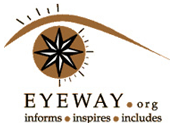BENGALURU: A Bengaluru inventor has developed a device that enables the visually impaired to use the length and width of currency notes to distinguish their value.
Paul D’Souza came up with the idea six years ago when he started working on devices for the blind.
Over the years, he has created a grading machine that sorts gherkins, which is now used in the food processing industry, and five clocks for which he has been granted patents. He has restored two tower clocks — one in Nagpur and the other belonging to his friend T R Raghunandan.
He started The Masters Touch Trust that works towards fostering innovation to benefit the disabled.
In the course of his work, he got in touch with an organisation called Kanthari in Thiruvananthapuram.
Tiffany Brar, a visually-impaired girl who worked for the organisation, had asked him to make something that would help people like her identify currency notes.
“I was puzzled as I thought our bills had some sort of markings that help the blind. But she told me that they are not helpful, especially on the old and worn out notes. After that, I started studying our currency,” he narrates.
Paul observed that the Rs 10 and Rs 20 notes are narrow and have the same width, while the Rs 20 note is slightly longer.
The Rs 50 note is of the same length as Rs 20, but slightly broader. Notes with denominations higher than Rs 50 are of the same breadth and width, but are different in length.
“The template — called Tiffy — comprises a simple piece of board that allows the user to assess currency notes based on their length, width and Braille markings,” he says.
One can take any currency note and fold it over this tool. The length of the note is measured against a series of steps. The higher the step, the greater the denomination. The production cost of the device is only Rs 2. Before finalising on the product design, Paul made different versions of it and asked for feedback from Tiffany and others.
“We came up with four versions. The study and the changes were done over six months. We picked the version that was easiest to use and manufacture,” he says.
The template is named after Tiffany Brar, who runs Jyothirgamaya Foundation, an NGO through which she teaches English, independent living skills, mobility and computers to blind students.
The funds for the innovation were raised on FuelADream, a crowd- funding platform.
Paul is trying to raise money to make two lakh templates and make many lives better.
The crowd funding campaign was designed to fund the manufacture and distribution of these devices, available for free to anyone who needs them.
Individuals and organisations can register with their address and contact details along with their requirements on tmttblr@gmail.com.

Facebook comments